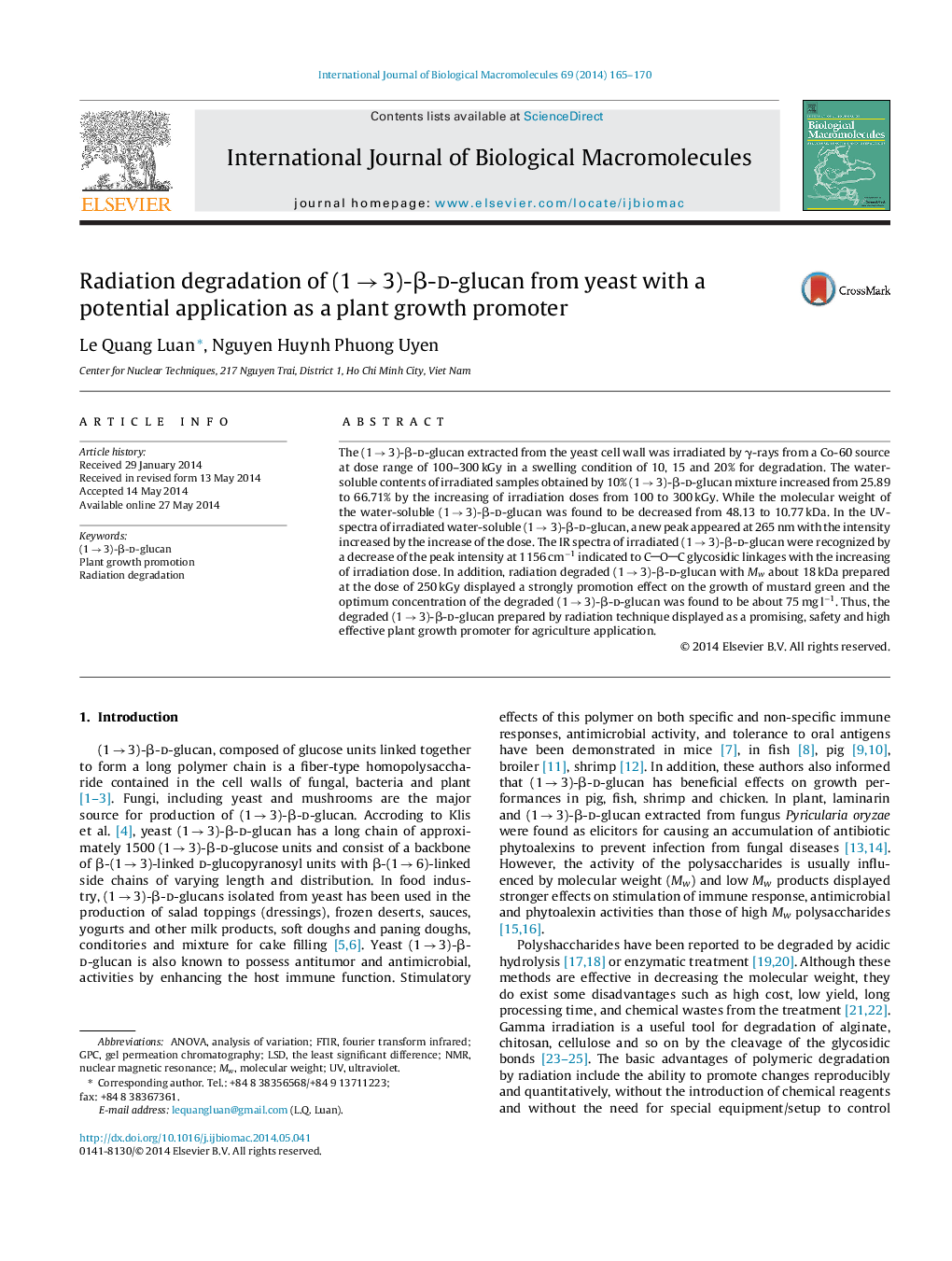| Article ID | Journal | Published Year | Pages | File Type |
|---|---|---|---|---|
| 1986685 | International Journal of Biological Macromolecules | 2014 | 6 Pages |
•In this study we prepared water-soluble oligo-(1→3)-β-D-glucan by γ-rays irradiation.•The properties of irradiated (1→3)-β-D-glucan were characterized by GPC, UV-visible spectroscopy, FTIR and NMR spectrophotometers.•The radiation-degraded (1→3)-β-D-glucan with Mw ∼ 18 kDa displayed a strongly promotion effect on the growth of mustard green.•The optimum concentration of the oligo-(1→3)-β-D-glucan was found to be about 75 mg l-1.•The oligo-(1→3)-β-D-glucan prepared by radiation technique displayed as a promising plant growth promoter for application in green agriculture.
The (1 → 3)-β-d-glucan extracted from the yeast cell wall was irradiated by γ-rays from a Co-60 source at dose range of 100–300 kGy in a swelling condition of 10, 15 and 20% for degradation. The water-soluble contents of irradiated samples obtained by 10% (1 → 3)-β-d-glucan mixture increased from 25.89 to 66.71% by the increasing of irradiation doses from 100 to 300 kGy. While the molecular weight of the water-soluble (1 → 3)-β-d-glucan was found to be decreased from 48.13 to 10.77 kDa. In the UV-spectra of irradiated water-soluble (1 → 3)-β-d-glucan, a new peak appeared at 265 nm with the intensity increased by the increase of the dose. The IR spectra of irradiated (1 → 3)-β-d-glucan were recognized by a decrease of the peak intensity at 1156 cm−1 indicated to COC glycosidic linkages with the increasing of irradiation dose. In addition, radiation degraded (1 → 3)-β-d-glucan with Mw about 18 kDa prepared at the dose of 250 kGy displayed a strongly promotion effect on the growth of mustard green and the optimum concentration of the degraded (1 → 3)-β-d-glucan was found to be about 75 mg l−1. Thus, the degraded (1 → 3)-β-d-glucan prepared by radiation technique displayed as a promising, safety and high effective plant growth promoter for agriculture application.
Graphical abstractFigure optionsDownload full-size imageDownload as PowerPoint slide
